Archetypes
Why Be a Princess if You Can Be a Lady-in-Waiting?
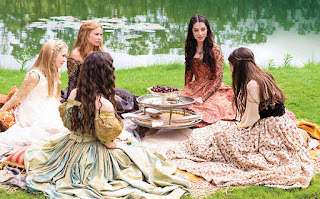
Let's say a princess asked you to be her best friend. Would you jump at the chance? That was precisely the role that a lady-in-waiting was hired to fill. You would have to be of noble birth, of course, but let's imagine that luck was in your favor. Considering how many stories, films, and shows are about princesses, it's surprising how few of them acknowledge their esteemed companions. If a princess is a superhero, her lady-in-waiting would be her sidekick. Is being a sidekick so bad? You would still get to be part of the all action at court. Only in recent years has the lady-in-waiting role made a comeback in the media.
There are many benefits of being a lady-in-waiting. Though it was an unpaid position, ladies got free room and board in the castle and beautiful gowns to match their status. Let's face it. Those are two of the best perks of being a princess. The position comes with esteem and honor for yourself and your family, and you get a royal best friend who confi…
There are many benefits of being a lady-in-waiting. Though it was an unpaid position, ladies got free room and board in the castle and beautiful gowns to match their status. Let's face it. Those are two of the best perks of being a princess. The position comes with esteem and honor for yourself and your family, and you get a royal best friend who confi…
The Warrior Princess

It almost sounds like a paradox. Not very long ago, "warrior" and "princess" were two opposing archetypes. Princesses wore big dresses, were dainty, delicate and needed to be rescued. Warriors were the ones who rushed in to save them, clad in armor, weapons bravely drawn, letting nothing stand in their way. The Amazons, the original warrior women, have been around since ancient Greek mythology. One particular Amazon princess has existed in comic book form since the '40s and has just gotten her own theatrical film. I'm talking, of course, about Princess Diana. No, not that one!
It's Wonder Woman. As the daughter of Queen Hippolyta, Diana is very much a princess, and as an Amazon and DC superhero, she is also very much a warrior. The fact that she was created in 1941 makes this disassociation even more significant because it was not at all customary for women to be portrayed as warriors at that time, let alone princesses. She was created by William Marsto…
It's Wonder Woman. As the daughter of Queen Hippolyta, Diana is very much a princess, and as an Amazon and DC superhero, she is also very much a warrior. The fact that she was created in 1941 makes this disassociation even more significant because it was not at all customary for women to be portrayed as warriors at that time, let alone princesses. She was created by William Marsto…
Queer Princesses

Queer fairy tales could not have existed until fairly recently sue to social stigma. Gay and transgender princesses are rare, but they are out there and will only grow in number as the LGBT movement gains momentum. Since Disney is still testing the waters, we need to look to Japan, with its progressive culture of yaoi and yuri. Queer characters are fairly common in anime. When it comes to fairy tale tropes being turned on their head, there's no better example than Revolutionary Girl Utena.
Utena's gender and sexual identity are rather complex. In some ways, she is very feminine with her long pink hair and gentle voice. She got caught up in the mysterious rose duels in the hopes that she would be reunited with a prince who comforted her when she was a young girl. Yet, Utena rejects social norms by wearing a boy's uniform to school, wielding a sword, and telling everyone that she wants to become a prince. She isn't exactly transgender, but she could be gender fluid. Her …
Utena's gender and sexual identity are rather complex. In some ways, she is very feminine with her long pink hair and gentle voice. She got caught up in the mysterious rose duels in the hopes that she would be reunited with a prince who comforted her when she was a young girl. Yet, Utena rejects social norms by wearing a boy's uniform to school, wielding a sword, and telling everyone that she wants to become a prince. She isn't exactly transgender, but she could be gender fluid. Her …
Magical Girl Princesses

It's the premiere week of Mysticons, so let's talk about magical girls and their impact on princess mythology. The magical girl craze began in Japan as a genre of anime called "mahou shoujo." No one knows exactly how it started, but it is believed that the first magical girl appeared in 1966 as Sally the Witch. Though individual stories vary, all the series in the mahou shoujo genre contain grade school-aged girls who receive sparkly trinkets that allow them to transform into pretty superheroes. They fight bad guys by screaming magical words and releasing different types of spells, usually in a pretty sequence of recycled animation. The concept seems rather silly from an outside perspective, but it definitely sells. Not all magical girls are princesses, but it is a common overlying theme, most likely because the genre was created for the same target audience.
The most princessy magical girl anime would probably have to be Go! Princess Pretty Cure (pictured above), wh…
The most princessy magical girl anime would probably have to be Go! Princess Pretty Cure (pictured above), wh…
Princesses in Video Games

This week, I'm going to talk about different types of princesses, beginning with digital ones. I am no expert on video games, but princesses have been a big part of them ever since the NES era of the 1980s. They have become a staple of the ever evolving technology. The two most famous video game princesses are Zelda from The Legend of Zelda, a series that began in 1986, and Peach, who evolved from Princess Toadstool in the Super Mario Bros. series that started 1985. Though they both began as stereotypical blonde princesses in pink dresses who needed to be rescued by the hero of their corresponding game, Peach and Zelda each stand out as very different characters. I would say it's no contest which one of them is the better princess.
Even though Zelda began as a damsel in distress, the many incarnations of the series have evolved her into a wise, graceful, and confident leader. In many ways, she is no more of a damsel in distress than Princess Leia is from Star Wars. Both get ca…
Even though Zelda began as a damsel in distress, the many incarnations of the series have evolved her into a wise, graceful, and confident leader. In many ways, she is no more of a damsel in distress than Princess Leia is from Star Wars. Both get ca…
Princess Parodies

As I mentioned in my first blog entry, Disney Princesses are caricatures of the ideal woman from their time period. Since, as well all know, nobody is perfect, this this trope is easy for other studios to poke fun at. Many have, including Disney themselves with Enchanted. By exaggerating these perfect princesses so much that the very traits that make them perfect become their flaws, the characters become more human, allowing the audience to better relate to them. Some of these parodies are more mean-spirited than others. I think the movie that struck the perfect balance between satire and humanity was Dreamworks' Shrek in 2001.
One of the founding members of Dreamworks was Jeffrey Katzenberg, who had previously worked for Disney, just like many other creators of successful non-Disney productions, including Don Bluth. Katzenberg was frustrated with the House of Mouse and created Shrek to compete with them, which is why the movie came off as a bit mean-spirited at times. Regardless …
One of the founding members of Dreamworks was Jeffrey Katzenberg, who had previously worked for Disney, just like many other creators of successful non-Disney productions, including Don Bluth. Katzenberg was frustrated with the House of Mouse and created Shrek to compete with them, which is why the movie came off as a bit mean-spirited at times. Regardless …
Faery Princesses

The concept of a "faery princess" is often pegged as the most feminine thing a girl can dress up as. Yet, there are surprisingly few stories about faery princesses. The ones that do exist are somewhat obscure. Sure, there's Queen Titania from Shakespeare's "A Midsummer Night's Dream," but that story contains no faery princesses, and her character is not referenced often in fiction. The term "faery" is derived from the "fae folk," who were mischievous sprites from old European mythology that liked to prank mortals with their powers. They did not necessarily have wings, but this changed during the era of of J.M. Barrie's Peter Pan around the early 1900s, which portrayed Tinker Bell as a tiny winged woman. Though "fairy" is the more common spelling (even though fairy tales rarely actually have faeries in them), "faery" is more proper because it's closer to the root word, "fae."
Surprisingly, Disney …
Surprisingly, Disney …
Mermaid Princesses

From mermaid margaritas to mermaid cafés, mermaids are huge right now. I touched on this topic a bit in my "Little Mermaid" post, but mermaids are not limited solely to retellings of Hans Christian Andersen's most famous tale. The concept of a "mermaid princess" is almost as popular as a "faery princess," though mermaids do offer more limited mobility when it comes to playing dress-up. Mermaids are everywhere these days from books to movies to TV series, and Asian culture loves them too.
Let's start with Ariel, my favorite mermaid princess. She is my favorite for a multitude of reasons. Most mermaids are blonde, but Ariel dares to be different with her fiery red hair and passion for the surface world. Her thirst for knowledge is highly contagious because of how excited she gets every time she discovers something new. For this reason, I think she's a fantastic role model for girls. In the 1989 movie, she dared to defy her powerful father and se…
Let's start with Ariel, my favorite mermaid princess. She is my favorite for a multitude of reasons. Most mermaids are blonde, but Ariel dares to be different with her fiery red hair and passion for the surface world. Her thirst for knowledge is highly contagious because of how excited she gets every time she discovers something new. For this reason, I think she's a fantastic role model for girls. In the 1989 movie, she dared to defy her powerful father and se…
Animal Princesses
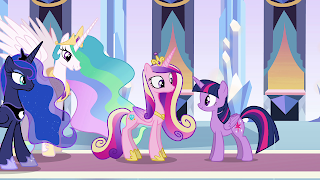
I'm not a huge fan of talking animals. To me, most animal stories come off as silly or out of place. However, there are some stories that do such a great job at building full-fledged animal societies that I can't help but appreciate them. Of course, it helps if they also manage to incorporate some princess mythology. The best show to do this that I've seen is My Little Pony: Friendship is Magic. Unicorns are the next best thing to faeries and mermaids, and no one does unicorn princesses better than Hasbro Studios. The vast world of Equestria is just as beautiful and magical as any fairy tale princess kingdom.
The My Little Pony franchise began in the 1980s as a toy line for girls. I even had a couple of them as a kid, myself. The My Little Pony 'n Friends cartoon ran for two seasons in 1986 largely to promote the toy line. It was a bit of a mess, with inconsistent characters and stories. There were a few decent specials, but it wasn't until Lauren Faust gave the th…
The My Little Pony franchise began in the 1980s as a toy line for girls. I even had a couple of them as a kid, myself. The My Little Pony 'n Friends cartoon ran for two seasons in 1986 largely to promote the toy line. It was a bit of a mess, with inconsistent characters and stories. There were a few decent specials, but it wasn't until Lauren Faust gave the th…
Princess Offspring

What stories are left to tell after a princess finds her prince and lives happily ever after? That's the question Mattel decided to explore when they created Ever After High in 2013. The series detailed the lives of the teenage offspring of famous fairy tale characters through dolls, books, and animated shorts. It was initially created as a companion franchise to their already popular Monster High series from 2010 and was clearly inspired at least somewhat by the Disney Princesses. Though this was not the first time fairy tale characters were documented to have offspring, it was the first story about all of their children attending school together and exploring their own identities in relation to their famous parents. The franchise was so successful that many other companies tried to create knock-off versions of it, including Disney with their cringe-worthy Descendants movies.
Princesses having offspring dates back to the days when the fairy tales were first transcribed. In Charl…
Princesses having offspring dates back to the days when the fairy tales were first transcribed. In Charl…
Live-Action Princesses
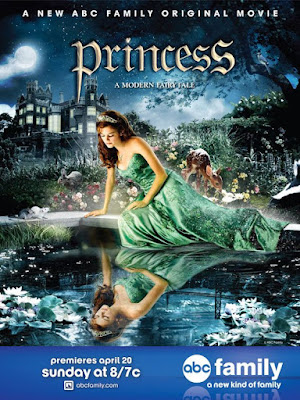
The final entry in my series of different types of princesses is about the ones who are most famous for their portrayals in live-action movies. That means I'm not counting any of Disney's live-action remakes because all of those characters were made famous through old stories and animation. Live-action movies create worlds that feel more grounded and less fantastical than animation. These princesses look like someone you might see walking around on the street, but each has an amazing secret. Somewhere in the world, there is a kingdom that waits patiently for their return.
First up, we have ABC Family Channel's original movie from 2008, titled simply Princess. I have no idea why Disney chose to air this on their channel for family dramas instead of the more age-appropriate Disney Channe. Fortunately, it wound up on Netflix later to build a larger audience. Though there was a lot in the story that went unexplained, such as where the mysterious princess powers came from or wh…
First up, we have ABC Family Channel's original movie from 2008, titled simply Princess. I have no idea why Disney chose to air this on their channel for family dramas instead of the more age-appropriate Disney Channe. Fortunately, it wound up on Netflix later to build a larger audience. Though there was a lot in the story that went unexplained, such as where the mysterious princess powers came from or wh…
Are All Queens Evil?

In my "Animal Princesses" post, I mentioned that Lauren Faust was coerced by Hasbro to change Queen Celestia into Princess Celestia because little girls see queens as evil and princesses as good. Why is that? Surely, there were many benevolent queens throughout history and mythology. Have the Disney Princesses taken over the world so much that people believe that princesses ran the monarchy? I think it's more complicated than that. Wicked queens are usually stepmothers who seduce the king to gain power. Most princesses don't have mothers, and the few that do are very loving. What is the root of the problem behind all the queen hate?
The Evil Queen from the ever evolving tale of "Snow White" strikes fear into children's hearts at the mere mention of her name, if she has one, of course. Since Snow White and the Seven Dwarfs was the first animated feature film ever, it had the side effect of setting the groundwork for certain archetypes in animated fairy t…
The Evil Queen from the ever evolving tale of "Snow White" strikes fear into children's hearts at the mere mention of her name, if she has one, of course. Since Snow White and the Seven Dwarfs was the first animated feature film ever, it had the side effect of setting the groundwork for certain archetypes in animated fairy t…
Are All Princesses Good?

Yesterday, I explored the stigma that all queens are evil. Today, I'd like to follow up with an analysis of the stigma that all princesses are good. In the 1985 movie, Legend, Princess Lili gets seduced by Darkness and transforms into a "dark princess" in a revealing black dress, implying that her innocence had been taken away. Does being a princess and wearing a white dress automatically make a character sweet and innocent? The creators of Child of Light, which I referenced in my "Video Game Princesses" post, had some fun with this concept by disguising a wicked princess to look like a good one. Ironically, the word "princess" is often used as an insult. Why? No one embodies the reasons behind that better than Princess Morbucks from The PowerPuff Girls.
Despite her name, Princess is not actually a princess. She is the spoiled daughter of a very rich man who gives her everything she wants. Thus, she possesses all of the princess traits that are frowne…
Despite her name, Princess is not actually a princess. She is the spoiled daughter of a very rich man who gives her everything she wants. Thus, she possesses all of the princess traits that are frowne…
Princess Sisters

The fall of the Disney Prince left a gaping hole in many princesses' hearts that could only be filled by a different type of love. Instead of focusing on ladies-in-waiting and stories about friendship like in the Barbie movies, Disney decided to start giving their princesses siblings. Until recently, most of them were only children, and very few of them had two parents. I've written a little about Ariel's sisters in the past, but they come off as a separate entity from Ariel with the exception of a few episodes of the series. Modern princess sisters spend just as much time together as they do apart and compliment each other's differences, teaching children how to get along with people who don't share the same perspectives as them. The first Disney characters to achieve this were not Anna and Elsa, but Sofia and Amber from Sofia the First.
Once Upon a Princess, Sofia's 2012 premiere movie, was all about her rocky relationship with her new stepsister, Amber. Befor…
Once Upon a Princess, Sofia's 2012 premiere movie, was all about her rocky relationship with her new stepsister, Amber. Befor…
Power Princess Leaders

Princesses can't be damsels in distress all the time. One day, they will need to rule an entire kingdom. Though many princesses start out sheltered and powerless dreaming of freedom, some of our favorite animated princesses start out early and learn how to lead their companions in the fight against evil. Though these stories do give princesses more freedom than they would probably realistically have, they also open up the range of female-targeted entertainment to different types of girls. Magical Girl groups usually have a princess leading them, but it's becoming more common among Disney Princesses as well. This is a tribute to all the princesses who can wear pretty dresses and still be strong and powerful leaders at the same time.
For me, Princess Gwenevere from Princess Gwenevere and the Jewel Riders was the first one to show me that a princess can be a great leader. Even though she loves dressing up and flirting, she aggressively refuses to wait around for a man to come fin…
For me, Princess Gwenevere from Princess Gwenevere and the Jewel Riders was the first one to show me that a princess can be a great leader. Even though she loves dressing up and flirting, she aggressively refuses to wait around for a man to come fin…
The "Damsel in Distress" Stigma

I recently saw a fantastic YouTube video analyzing the stigma that the title character from Disney's 1950 Cinderella is inherently weak despite enduring years of abuse and maintaining a strong survival instinct. It got me thinking about one of the most common criticisms people have toward princesses, which is that being a "Damsel in Distress" is a poor influence on girls. My issue with this is that it implies these characters somehow choose to put themselves in horrible situations in an attempt to be rescued by a prince. Why would anyone choose to be placed in such awful situations? They wouldn't. Just because many of the older princesses do find a way out of their unfortunate circumstances through the love of a prince (which is no longer the case) does not imply that they were the masterminds behind their own abuse. In fact, if they had intentionally put themselves in these situations, they would certainly have some extremely messed up psychological issues.
There…
There…
The Struggle of the Introverted Princess

There are many princesses who come off as introverts. Cinderella, Belle, and Tiana prefer to keep to themselves and avoid social situations if given the opportunity. Since they were not raised as princesses and lead generally quiet lives, this is not a problem for them during the course of their movies. However, as we get older, it becomes more and more difficult to avoid such situations. An inability to maintain the proper amount of social decorum can make it challenging to show the world that you are a modern princess. Keeping to yourself is often misinterpreted as pretentious, a criticism that even Belle has faced from naysayers. Is it possible to maintain your princess mannerisms in social situations without running away like Elsa?
How introverted or extroverted you are has nothing to do with how much of a princess you are. Yet, there are certain struggles that introverts face that do not affect extroverts as much. A princess must be the face of order among chaos, the glowing beac…
How introverted or extroverted you are has nothing to do with how much of a princess you are. Yet, there are certain struggles that introverts face that do not affect extroverts as much. A princess must be the face of order among chaos, the glowing beac…
The Desire To Be Free

While compiling songs for my next princess karaoke medley, it occurred to me that an overwhelming amount of princess songs are about freedom. It's no secret that freedom is a common theme among fairy tales and princess-like characters, but the concept goes much deeper than that. What's particularly interesting about it is the fact that it applies just as much to characters who were born princesses as it does to the ones who found their freedom by becoming princesses. The desire to be free is such a universal concept that it transcends status, power, or race. Everyone can feel as though they are trapped at some point in their life.
The beautiful song written for Princess Jasmine in the retired Aladdin: A Musical Spectacular show (which got replaced by the inferior Broadway production) was simply entitled "To Be Free." The song's opening line, "Lucky bird inside a gilded cage," is recited with perfect irony because telling someone they are fortunate to li…
The beautiful song written for Princess Jasmine in the retired Aladdin: A Musical Spectacular show (which got replaced by the inferior Broadway production) was simply entitled "To Be Free." The song's opening line, "Lucky bird inside a gilded cage," is recited with perfect irony because telling someone they are fortunate to li…
The Magic of True Love
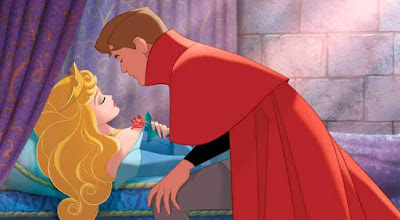
Today is a very special day for me. It's the one year anniversary of the day I married my true love. My wedding was truly magical and made me feel like a princess because I was surrounded by all the people I love. Love is an important theme in princess stories. Even though they have shifted direction somewhat in recent years, it is still very much relevant to the princess genre. In fact, love is probably the biggest defining factor of a princess story. It is what gives them their strength against the bad guys and what ultimately allows them to achieve their goals. Of course, I'm not just talking about romantic love. Many people take issue with the unconscious kiss in "Sleeping Beauty" that gives the cursed princess new life. Though that particular act itself may be problematic due to issues of consent, it is still significant because it represents a universal idea--Love will set you free.
Of course, that doesn't mean that everyone must fall in love and get marrie…
Of course, that doesn't mean that everyone must fall in love and get marrie…
What's With All the Unicorns?

My Little Pony: Friendship Is Magic recently began its eighth season, making the unfortunate decision to focus more on the plot of the sub-par movie than the epic new characters that were introduced in the season finale. Even though this colorful series about winged unicorn princesses has been losing some traction over the past few years, the incorporation of unicorns into everyday life has not. Within the past month, I have seen promotions for a unicorn cereal, unicorn ice cream, and even unicorn nail art. There have also been many unicorn-themed makeup kits that popping up over the past few years. Who can forget all the fuss last year over Starbuck's limited edition Unicorn Frappuccino? When it comes to unicorns, you either get it or you don't. There is no in between. If you're wondering why does this generation seem to leap at the chance to add some sparkly pastel-colored magic to their everyday lives, please read on.
For many, it simply comes down to feeling like a pri…
For many, it simply comes down to feeling like a pri…
Disabled Princesses

Today's post is sponsored by my good friend Kae-Leah Williamson, Royal Purple Mermaid Princess, who contributed to the Tiara Tier on my Patreon account. If you have a suggestion for a future post, feel free to click the link to contribute. Kae-Leah chose disabled princesses for her topic, one that tends to get a lot less love than it should. In the surprise cult hit Netflix movie, A Christmas Prince, a journalist named Amber goes undercover as the tutor of Princess Emily, a little girl with a condition that makes her unable to walk on her own. "I know what you're thinking," says Emily, sizing up Amber's reaction to her condition, "Poor little rich girl. That's what they all say." In the most stereotypical response ever, Amber replies "No, I was thinking brave little girl." That was a nice try to be sentimental on Netflix's part, but having a disability does not make a person any more or less brave just for waking up in the morning and …
Why I'll Never Do a Top Ten List
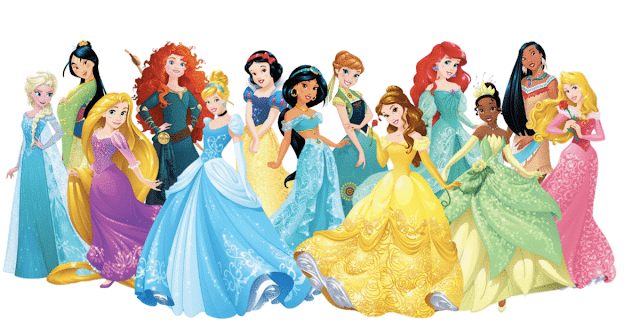
It's a fairly common thing for blogs or YouTube channels like mine to do rankings of the "best" characters, movies, etc. I put "best" in quotes because it's entirely subjective. I've seen plenty of "top ten" lists online before, and every time one of two things happen--I either agree with it or I don't. That's going to be the case for anyone who sees such a list. It's just one individual person's order of favorites, and it doesn't say anything about the quality of the movie or impact of the character. Now, if you were to ask me who my favorite princess is, I would have no problem answering that (Ariel), nor would I hesitate to tell you my runner-ups (Tiana, Mulan, Rinoa Heartilly, Anastasia, Sofia, Rapunzel, and Belle). I could even give you a list of articles I wrote about one hundred different princesses if you're having trouble keeping track of them all. The only thing I won't do is go through each runner-up for…
An Ode to the Most American Princess of All
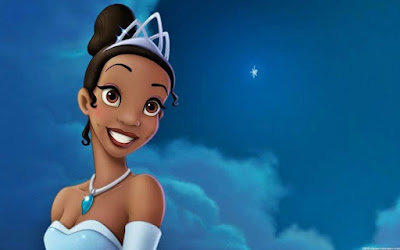
This Fourth of July, I'd like for us all to take a moment to appreciate the most American princess of all--Tiana from Disney's 2009 feature, The Princess and the Frog. Disney decided to put a very unique spin on the story of "The Frog Prince" by having it take place in 1920s New Orleans instead of medieval Germany and turning the spoiled princess into a studious entrepreneur who also happened to be their first animated black heroine. The risks they took paid off greatly because the movie is incredibly entertaining and unique, even if it wasn't a huge box office hit like they were hoping. There are so many reasons I love and relate to Tiana. I was glad to see her return briefly in the final season of Once Upon a Time as Jacinda's best friend, Sabine, even if they didn't do the best job with her fairy tale counterpart.
The Princess and the Frog celebrates many of the same ideals of freedom that we do for America on the Fourth of July both literally and metap…
The Princess and the Frog celebrates many of the same ideals of freedom that we do for America on the Fourth of July both literally and metap…
Is the Daughter of the Village Chief a Princess?

Being a princess can mean different things to different people. Being a Disney Princess gets a little more complicated. There's a joke from Disney's 2016 Moana about what makes a Disney Princess when Moana tries to tell Maui that she isn't a princess, and he claims that if she wears a dress and has an animal friend, she is, which is pretty much on par for Disney standards. Even though Moana isn't listed on the official Disney Princess page due to her movie being recent enough to market off its own name instead of the Disney Princess name, she was still included in the Wreck-It Ralph 2 trailer. Moana is pretty clear about how she sees herself is in the song "I am Moana" in which she states "I am the daughter of the village chief." The lovely Auli'i Cravalho who lends her voice to the spirited protagonist is also rather vocal vocal about how she considers Moana more of a heroine than a princess. Of course, with the way princess culture has evolved…
How Princesses Represent Hope

The final trailer was just released for Disney's latest fairy tale endeavor, The Nutcracker and the Four Realms. This trailer gives audiences more insight to the content of the four realms of snowflakes, flowers, sweets, and the creepy distorted land that was taken over by the movie's villain, Mother Ginger. The trailer also confirmed that the black man with the eye-patch from the previous trailer was in fact Clara's godfather, Drosselmeyer. While it still hasn't been confirmed in the dialogue that the soldier accompanying Clara in the trailers is Drosselmeyer's nephew, the Nutcracker turned human, it's fairly obvious at this point. Some people have commented that this movie looks like a remake of Tim Burton's 2010 live-action Alice in Wonderland. Both portray a classic heroine donning the uniform of a soldier to save an enchanted realm from evil. This feminist answer to the "one man's journey" trope brings in a new era that shifts the method …
Do Princesses Want To Be Queen?
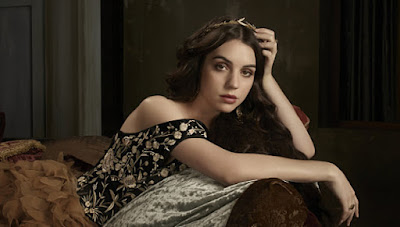
I've made some posts in the past about how more often than not, princesses are portrayed as good and queens as evil. Since this is so often the case, does that mean that the storybook princesses we love are not willing to fulfill their royal destiny as the hope for their kingdom's future? While it's true that princesses often seek freedom from the confines of palace life, they don't necessarily want to run away from their responsibilities either. The problem is that princess stories usually reveal only a brief period from their heroine's life that takes place before the biggest trials and tribulations of reaching full adulthood. I expanded upon this briefly in my "Confessions of a Grown-Up Princess Fan" post, where I discussed how even though I still relate to certain aspects of being a princess, I have developed a sense of cynicism that I did not have the first time I watched their movies. Seeing the world through the eyes of a princess now feels more li…
Transformations

Odette turned into a swan. Ariel turned into a human. Tiana turned into a frog. Thumbelina turned into a faery. Transformation is such a huge theme among fairy tales that it is practically embedded into their DNA. If you think beautiful transformation sequences are just a visual motif, you would only be half right. This theme is so common among fables because it represents a storytelling technique that has existed ever since stories started being told. Every good story takes a character on a complete journey, whether physical or metaphorical, that changes them by the time they reach its end. Likewise, each princess or prince who has transformed into their final form by the end of the movie leans a powerful lesson from their experiences. We see that lesson visually through the magic of animation and visual effects. For me, transformation sequences are the ultimate high point of traditional animation.
Every fairy tale princess begins her story as a sheltered ingenue who is thirsty for k…
Every fairy tale princess begins her story as a sheltered ingenue who is thirsty for k…
Feminism vs. Femininity
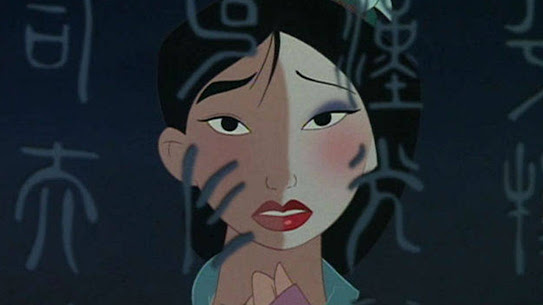
When the first Women's Rights meeting was held in Seneca Falls in 1848, some people were opposed to the concept of feminism because it was not considered feminine. By today's standards, it seems silly to even consider a world where women wouldn't be allowed to vote. Modern girls are encouraged to grow into powerful women who can do anything they put their minds to, pushing boundaries and breaking stereotypes. However, what is left to break when the stereotype they are fighting becomes obsolete? Through the years, Disney Princesses have represented the ultimate ideal for what it means to be a woman. During the Disney Renaissance era of the '90s, that ideal shifted from a damsel in distress to a rebel fighting to break free from the restrictions of her society. Today, a Disney Princess represents a young woman who has already reached the strength and potential of a queen and is simply waiting for her time to rise to power. In the 1998 version of Disney's Mulan, the t…
The Lost Princess Trope

Tangled wasn't the first movie to feature a mistreated girl who learned she was a princess, but it was the first to popularize the "lost princess" archetype. Why is this trope so appealing throughout so many recent books and films? Secretly being a princess is a fantasy that many little girls have when they're growing up, especially when they face difficult times. This popular story narrative gives a literal interpretation Sara Crewe's philosophy from A Little Princess that every girl is a princess even if they don't know it. One of the reasons this is such a common theme in princess stories is that it goes along with one of the seven basic plot archetypes , the "Rags to Riches" trope. In the past, that trope was used more often for stories based on "Cinderella," but the "lost princess" trope has become more common in modern media due to the lack of dependency on a man that the "Cinderella" trope requires. The first
What It Means To Be a Disney Princess in the 2020s

The first post I wrote in this blog was called "How the Disney Princesses Stayed Modern for 80 Years." The answer was a combination of creating new princesses to match the times along with branded promotional videos, events, and merchandise that combine the old with the new. The latest example is this year's Ultimate Princess Celebration , which is an attempt to celebrate all of the Disney Princesses, including ones that may feel outdated by today's standards, by releasing imagery that makes it look like they're all friends. This is a wonderful method of keeping some of my favorite childhood characters relevant , but it is also a shield used to cover up a darker truth that many of these characters would not be deemed acceptable by today's standards. We have reached a point in Hollywood in which traditional feminine traits are considered weak or problematic . As such, characters like Raya are considered the only acceptable way to portray a woman in the medi
Why Are Princesses Always Targets?

This is a sort of follow-up to my post about "How Princesses Represent Hope." Being a princess in a fantasy world often means having a neon target on your head. I do not want to use the word "victim" because that is separate from being a target. Modern princesses are more capable than ever of defending themselves , something that has changed over time as a direct response to the "Damsel in Distress" stigma . Yet, the fact that princesses can defend themselves from threats has not changed the fact that they are constantly being threatened. Even in stories with male leads, it is usually the princess or female love interest who is threatened, not the hero himself. Take for example Megara's binding servitude to Hades in Hercules or Frollo's relentless obsession with Esmeralda in The Hunchback of Notre Dame . There is a reason that princesses are coveted by heroes and villains alike. I was inspired to write this post after being introduced to yet a
Which Disney Princesses Could Have Attended Royal Prep?

In honor of the upcoming Sofia the First spinoff , I decided to rewatch the series . When I got about halfway through, I began to think about how well it developed Royal Prep as a school for princes and princesses without pushing a narrative that the classic Disney Princesses attended, which would retroactively change their backstories. I love the idea that a magical princess school can exist in the same world as the Disney Princesses without forcing them into the narrative. As I've expressed in the past, I had a major issue with The School for Good and Evil for claiming that every well-known fairy tale character attended their school even though most of them actually grew up impoverished and didn't have the resources to get any education, let alone a magical one. Ever After High does this to a lesser extent by insinuating that all of the fairy tale characters sent their children to the school, which makes more sense because it's normal for parents to want their children
Vintage Princess Fantasy Sequences
.jpg)
I wanted to review the new trailer for Disney's remake of The Little Mermaid today , but sadly, the trailer was canceled at the last minute . I'm upset about this because Aladdin had many more official promos at this point in its release. Instead of dwelling on present frustrations, let's take a deep dive into the past and see how fairy tale princesses were treated in film before the Disney Princess brand existed. There are a number of old movies from the '30s and '40s that feature a fantasy sequence with one of the main characters living the life of a fairy tale princess. These scenes were typically separate from the main plot of the film, separating the idealized dream of royalty a concept from historical fact . The first princess fantasy sequence comes from the 1939 film The Little Princess starring Shirley Temple , which is based on the book A Little Princess by Frances Hodgson Burnett . Though the story does not actually feature any princesses, Sara C
Deconstructing the Wicked Stepmother

It was common in the early days of fairy tales for the enemy of a princess or future princess to be her vain stepmother. There were many reasons for this, most of which are no longer relevant by modern standards, causing that trope to fall by the wayside. One outdated reason is that girls rarely left the house (or "tower" if you will) in the old days because they were expected to do housework and eventually become mothers. Therefore, meeting an enemy outside of their own homes would have been unlikely. Why do you think so many princesses long for freedom ? The other reason is that fairy tales are meant to encourage children to love and obey their parents, so it would be counterintuitive for them to go up against their biological caretakers. There are a few rare exceptions , but these disturbing stories about horrible parents never made it into the mainstream media for good reason. Giving them stepparents who were brought into their lives at a later time solves this problem




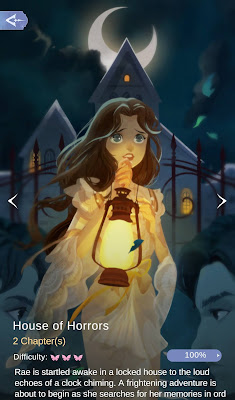




Comments